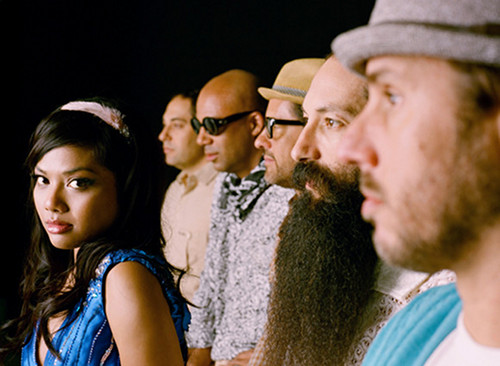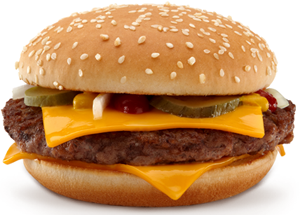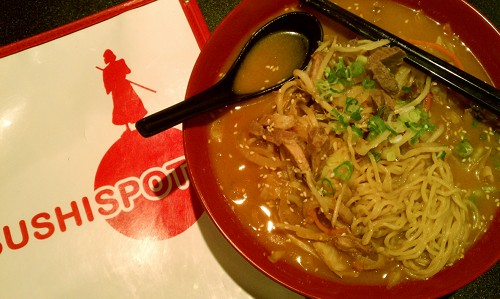

This was fun: Boston-based public broadcast company WGBH has added semi-regular brief conversations between several people on specific topics on its World Compass website. I was included on a recent "Interview Boxed" segment which was conducted via web video with me in Colorado, author, artist and host Damali Ayo in LA and journalist/activist Simba Russeau in Cairo, discussing the democracy...
Watching this 10-minute documentary by Los Angeles filmmaker Geeta Malik about our favorite Indian dance troupe, Mudra Dance Studio, reminds me how talented and dedicated the group is, and how thrilling it is to attend their every-other-year spectacular performances. Since they performed “ILLhaam… Cycles… ILLumination†last year, we'll have to wait until 2012 for the next big show. But this...
 It's a curious conceit of rock critics that we love being the early adopters who discover great new talent, but we want that talent to stay exactly as we found it, as if the music is some sort of archeological treasure, suspended in amber for the ages. We can't imagine a musician might continue along an evolutionary progression and grow and mature artistically. Or worse, we dismiss artists we like when they become too popular, as if being adopted by a wider, mainstream audience taints artistic credibility.
I know I've been guilty of both. I dismissed Joni Mitchell past "Miles of Aisles" as becoming too arty (as if her earliest, brittle folk gems weren't also arty to the extreme). I blew off Bruce Springsteen once he sold a bazillion copies of "Born in the USA." The fact is, most music critics are snobs, and we're proud of it. Over the years since I "retired" from being a full-time music critic, I've mellowed and accepted that I have biases (old-fart biases at that), and see how I blocked out good music by being an obstinate butthead.
So I was surprised when I realized I still fall back on snob instincts with new music from time to time. These days I rarely write about any music unless it's related to my interests in Asian culture or Asian American community.
I've written in the past (here and here), for instance, about Dengue Fever, an alt-rock band from California that was formed by a pair of white brothers who fell in love with Cambodian rock of the 1960s, and found a Cambodian singer to help them meld that sound with surf and psychedelic music.
For years I've been intrigued by the band's globe-hopping musicality and especially enchanted by singer Chhom Nimol's slinky, elastic vocals, which snakes through melodies with the tonality and scale of traditional Cambodian folk and pop songs.
In a word, though I hesitate to use it because it's such a loaded symbol of Orientalism, objectifying Asian culture and people, my attraction to Dengue Fever is in large part because of Nimol's exoticism.
There, I've said it.
It's a curious conceit of rock critics that we love being the early adopters who discover great new talent, but we want that talent to stay exactly as we found it, as if the music is some sort of archeological treasure, suspended in amber for the ages. We can't imagine a musician might continue along an evolutionary progression and grow and mature artistically. Or worse, we dismiss artists we like when they become too popular, as if being adopted by a wider, mainstream audience taints artistic credibility.
I know I've been guilty of both. I dismissed Joni Mitchell past "Miles of Aisles" as becoming too arty (as if her earliest, brittle folk gems weren't also arty to the extreme). I blew off Bruce Springsteen once he sold a bazillion copies of "Born in the USA." The fact is, most music critics are snobs, and we're proud of it. Over the years since I "retired" from being a full-time music critic, I've mellowed and accepted that I have biases (old-fart biases at that), and see how I blocked out good music by being an obstinate butthead.
So I was surprised when I realized I still fall back on snob instincts with new music from time to time. These days I rarely write about any music unless it's related to my interests in Asian culture or Asian American community.
I've written in the past (here and here), for instance, about Dengue Fever, an alt-rock band from California that was formed by a pair of white brothers who fell in love with Cambodian rock of the 1960s, and found a Cambodian singer to help them meld that sound with surf and psychedelic music.
For years I've been intrigued by the band's globe-hopping musicality and especially enchanted by singer Chhom Nimol's slinky, elastic vocals, which snakes through melodies with the tonality and scale of traditional Cambodian folk and pop songs.
In a word, though I hesitate to use it because it's such a loaded symbol of Orientalism, objectifying Asian culture and people, my attraction to Dengue Fever is in large part because of Nimol's exoticism.
There, I've said it.
This made me very sad. It proves that Amy Chua's book "Battle Hymn of the Tiger Mother," whether meant as a semi-humorous memoir where she's changed by the end and not as a mothering handbook (as she claims), has been institutionalized as the actual way Asian mothers raise their kids. The media have gobbled up the trope as accurate cultural...
 Immigrants to the United States strive to gain the American dream.... and manage to gain American weight at the same time. It makes sense if you think about it: You want to fit in as a newcomer to the U.S., and you know the cliché, "when in Rome do as the Romans do" -- you eat like people in Peoria or Poughkeepsie.
McDonald's, Burger King, Wendy's, Fattburger, Inn-N-Out, White Castle.... and that's just the burgers and fries. There's pizza, shakes, funnel cakes, onion rings, fried chicken, tacos, burritos, hot dogs, brats, chips of all kinds and candy out the wazoo (though, to be honest, Asians eat a wider array of strange and wonderful candy than the typical American chocolate bar).
It's not just the high-calorie, high carb, high-sugar diet of Americans, it's that immigrants embrace this diet with gusto to prove their American-ness. According to an article on Futurity.org, "Immigrants get supersized in U.S.," a study published in Psychological Science that compared Asian Americans with white college students found some facsinating data about their childhood food memories:
Immigrants to the United States strive to gain the American dream.... and manage to gain American weight at the same time. It makes sense if you think about it: You want to fit in as a newcomer to the U.S., and you know the cliché, "when in Rome do as the Romans do" -- you eat like people in Peoria or Poughkeepsie.
McDonald's, Burger King, Wendy's, Fattburger, Inn-N-Out, White Castle.... and that's just the burgers and fries. There's pizza, shakes, funnel cakes, onion rings, fried chicken, tacos, burritos, hot dogs, brats, chips of all kinds and candy out the wazoo (though, to be honest, Asians eat a wider array of strange and wonderful candy than the typical American chocolate bar).
It's not just the high-calorie, high carb, high-sugar diet of Americans, it's that immigrants embrace this diet with gusto to prove their American-ness. According to an article on Futurity.org, "Immigrants get supersized in U.S.," a study published in Psychological Science that compared Asian Americans with white college students found some facsinating data about their childhood food memories:
 I was severely depressed a month ago, when I sauntered up University Hill from the University of Colorado campus for my semi-regular fix of ramen from Bento Zanmai, the fast foodish takeout counter aimed at the student population in a funky food court alongside a pizza joint and Thai, Middle Eastern and Nepalese counters, and found the ramen spot was closed. I was too upset to call Sushi Zanmai, the parent restaurant that also owns Amu, the super-fine izakaya.
But today, as I pondered lunch options I decided to find out whaddup with the demise of Bento Zanmai. It's been closed, yes, I know, but what? Its entire menu is now being served just around the corner on the Hill at Sushi Spot, a slightly more upscale sushi restaurant that the Zanmai folks also own? Cool!
I should say upfront that although I love sushi, I'm not big fan of the crazy variety of special rolls that have been invented to entice and entertain Americans as sushi became mainstream in the past two decades. To me, even a California Roll (which I know is these days commonplace in Japan) is a mutant invention. I mean really, rice on the outside? Avocado? Come on....
I was severely depressed a month ago, when I sauntered up University Hill from the University of Colorado campus for my semi-regular fix of ramen from Bento Zanmai, the fast foodish takeout counter aimed at the student population in a funky food court alongside a pizza joint and Thai, Middle Eastern and Nepalese counters, and found the ramen spot was closed. I was too upset to call Sushi Zanmai, the parent restaurant that also owns Amu, the super-fine izakaya.
But today, as I pondered lunch options I decided to find out whaddup with the demise of Bento Zanmai. It's been closed, yes, I know, but what? Its entire menu is now being served just around the corner on the Hill at Sushi Spot, a slightly more upscale sushi restaurant that the Zanmai folks also own? Cool!
I should say upfront that although I love sushi, I'm not big fan of the crazy variety of special rolls that have been invented to entice and entertain Americans as sushi became mainstream in the past two decades. To me, even a California Roll (which I know is these days commonplace in Japan) is a mutant invention. I mean really, rice on the outside? Avocado? Come on....
Erin and I are celebrating the second anniversary of our talk-show visualizAsian, and I've been writing my Nikkei View musings since 1998 (check out the Nikkei View archives). But it boggles my mind to think that Phil Yu has been writing his Angry Asian Man blog for 10 years. Why? Because he's so frickin' dedicated that he writes multiple times...

This website uses cookies to improve your experience. We'll assume you're ok with this, but you can opt-out if you wish. Read More


